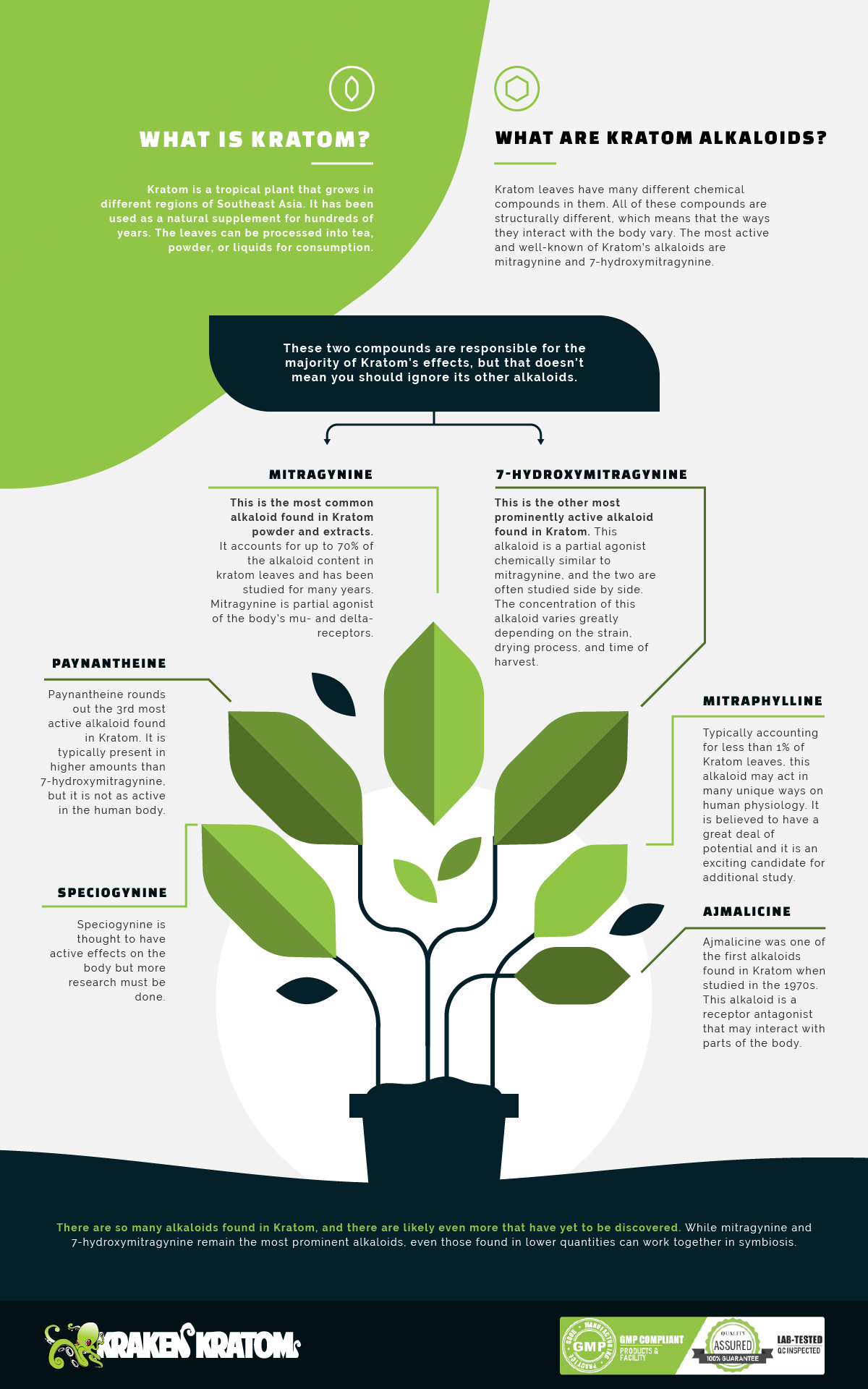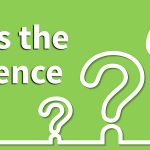Kratom’s Most Abundant Alkaloids and Their Effects
The chemistry hiding just below the surface of Kratom’s bright green leaves is astoundingly complex. To date, scientists have discovered more than 40 different alkaloids comprising the plant, with new compounds found regularly. It’s becoming increasingly evident why the plant has been a mainstay in Southeast Asia for hundreds of years and why you can find Kratom for sale at different stores all over the US.
Each alkaloid plays a different role within the plant, and each has a unique effect on the human body. We’re learning that the interplay between these compounds causes an entourage effect. No one substance is responsible for our experience. Instead, there’s a synergy between the various Kratom alkaloids, and together they give rise to the plant’s signature medicinal qualities.
That said, some of these compounds occur in higher concentrations than others, and have an outsized impact on our experience of the plant. We’ll explore the plants most abundant alkaloids, learning a bit more about their chemistry and their effects on our bodies.
But before we begin, check out this awesome graphic from Kraken Kratom for a visual interpretation of the various alkaloids found in Kratom.

Mitragynine
Mitragynine is by far Kratom’s most common alkaloid, comprising roughly 65% of the total volume. As such, it’s responsible for much of the plant’s perceived effects.
The compound is an indole alkaloid, which means it interacts significantly with our body’s natural chemistry. Much of the plant’s euphoric, pain-relieving, opioid effects are caused by mitragynine. It produces a pleasant stimulant quality and mild euphoria at low doses and more generalized sedation in larger amounts.
But those aren’t the only tricks up this prodigious substance’s sleeves. The compound also bears antidiarrheal properties and adrenergic effects that can aid in breathing.
Mitragynine works alone, and in conjunction with a second alkaloid to produce its signature impact — 7-hydroxymitragynine.
7-Hydroxymitragynine
This alkaloid is found in much lower levels than its compatriot. It’s the fourth most prevalent member of this list, comprising only 2% of the total alkaloid volume. But its synergistic effect with mitragynine ensures it second place on our list of Kratom’s most influential compounds.
7-Hydroxymitragynine is a metabolite of mitragynine and shares many of its effects. Additionally, it’s known to help mediate a cough. This feature and the compound’s analgesic and opioid qualities are why many people compare Kratom to codeine.
Levels of 7-hydroxymitragynine can vary widely between Kratom species. The age of the plant also meters its abundance. This variability accounts for some of the experiential differences noted by users of various strains.
Paynantheine
Paynantheine is Kratom’s second most abundant alkaloid, but it’s still found at levels far lower than mitragynine. The compound accounts for just under 9% of the plant’s alkaloid load. Research into the substance’s medicinal effects has only just begun, but already researchers have confirmed that it’s a substantial smooth muscle relaxant.
We still have a lot to learn about paynantheine’s effects, but it appears that it helps to mediate the plant’s stimulant properties, adding a pleasant sense of relaxation that softens what might otherwise be a nerve-jangling experience.
Speciogynine
The third most abundant alkaloid, clocking in at just under 7%, speciogynine shares paynantheine’s smooth muscle relaxant properties.
Interestingly, speciogynine’s chemical structure is a mirror image of Kratom’s most abundant alkaloid, mitragynine. But that doesn’t mean it shares the compound’s effects. The two are diastereomers, which means their structures are mirror-reversed but can have very different chemical properties. But this relationship does account, at least in part, for the two substance’s collaborative effects.
Mitraphylline
Starting with mitraphylline, every remaining alkaloid represents less than 1% of Kratom’s total alkaloid volume. But they can still have a measurable effect on the user.
Mitraphylline is the first oxindole alkaloid on this list, credited with several notable impacts. Most impressive is its ability to dilate blood vessels, aiding conditions from hypertension to headaches. It’s also a muscle relaxant, similar to paynantheine and speciogynine.
Other properties are only beginning to be explored. More research is needed to confirm these next effects, but preliminary studies have shown diuretic properties, extending the substance’s ability to treat high blood pressure. The compound may also guard against the cognitive decline associated with old age and stimulate the immune system.
Isomitraphylline
Research is sparse, but a few promising studies have demonstrated isomitraphylline’s potential as an immunostimulant. Both isomitraphylline and mitraphylline show promise, so it’s an area ripe for exploration.
Speciophylline
Speciophylline is a mild euphoriant, found to increase feelings of happiness and wellbeing. Along with paynantheine, speciophylline helps to mitigate Kratom’s stimulant effects, producing a light euphoria that increases focus and alertness.
Rhynchophylline
This alkaloid’s chemical structure bears similarities to mitragynine, but its effects are significantly different. The compound contributes many useful medicinal properties.
Most notable are its anti-inflammatory effects. Studies show it may also reduce neuronal damage in the event of a stroke. It’s adept at reducing fevers. It’s also a calcium channel blocker, contributing to Kratom’s antihypertension characteristics.
Isorhynchophylline
This alkaloid is a mouthful to name but we’re happy it’s here. The compound is a promising antihypertensive and neuroprotective, similar to the last alkaloid discussed.
Ajmalicine (Raubasine)
This compound is a workhorse. Among the many qualities currently under examination, ajmalicine helps to increase blood flow to the brain. Simultaneously, it can help decrease the risk of heart attack and stroke by slowing blood clot growth.
It shows promise in clinical settings as an anti-adrenergic, useful for treating anxiety disorders and PTSD. To round out its features, the compound is an anticonvulsant and a smooth muscle relaxer.
The List Goes On
There are dozens of other interesting compounds that contribute to Kratom’s astonishing capabilities. Science has really only scratched the surface of the plant’s possible therapeutic applications.
More research is necessary, but it’s certain that Kratom will climb the list as one of the planet’s most potent, and diverse natural medicines. We’ll be sure to bring you developments as they happen.




Leave a comment